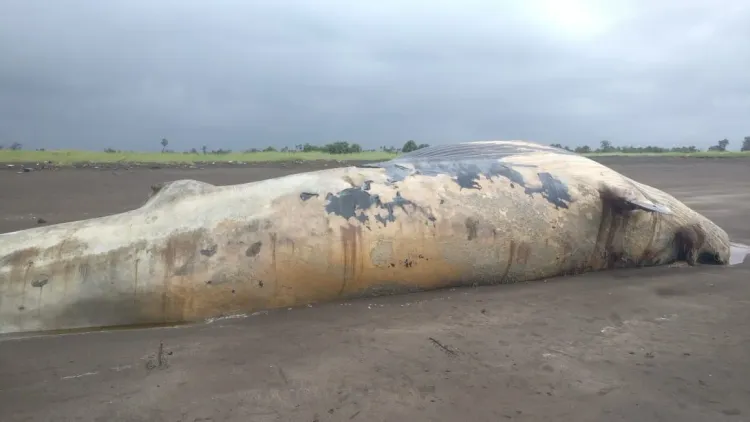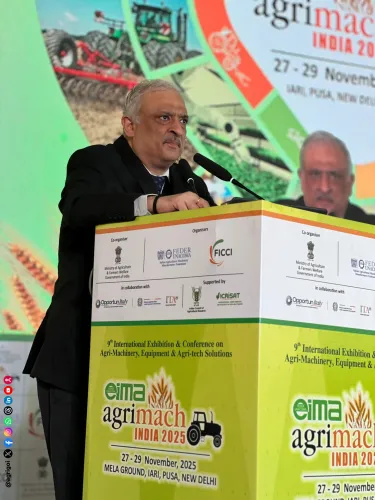Why Are Whale Strandings Increasing Along India's Southwest Coast?

Synopsis
Key Takeaways
- Tenfold increase in whale strandings in the past decade.
- Key hotspots include Kerala, Karnataka, and Goa.
- Bryde’s whales are the most frequently stranded species.
- Need for region-specific conservation strategies.
- Importance of predictive models using satellite data.
Kochi, Aug 12 (NationPress) Whale strandings along India’s southwest coast have seen a staggering increase of tenfold over the last decade, according to research conducted by the ICAR–Central Marine Fisheries Research Institute (CMFRI). This alarming trend underscores the urgent necessity for region-specific conservation strategies to combat the impacts of climate change.
The comprehensive analysis, which examined data from 2004 to 2023, revealed that annual whale strandings escalated from a mere 0.3 percent between 2003 and 2013 to three percent during the period of 2014–2023.
This dramatic rise is linked to a combination of changing ocean ecosystems, intensified human activities, and enhanced reporting through social media and citizen science networks. The states of Kerala, Karnataka, and Goa have emerged as significant hotspots, accounting for the majority of reported strandings.
Factors such as heavy vessel traffic, aggressive fishing practices, noise pollution, collisions with ships, habitat degradation, and shallow coastal waters have been identified as primary contributors to this issue.
The most frequently stranded species are Bryde’s whales, although there have been occasional records of blue whales as well. The study also discovered genetic diversity among the Bryde’s whale populations, confirming the existence of two distinct forms within Indian waters.
The year 2023 marked a peak in strandings, with nine cases reported, the highest in recent years, predominantly occurring between August and November.
The study established a connection between strandings and environmental indicators, observing a positive correlation between chlorophyll-a concentrations and whale strandings during the southwest monsoon.
This nutrient upwelling draws whales closer to the shore for feeding, thereby increasing the likelihood of strandings.
Additionally, rising sea surface temperatures and converging currents were determined to play a role, sometimes driving weakened or deceased whales onto beaches.
The researchers emphasized the necessity for predictive models that utilize satellite data on chlorophyll levels, wind patterns, and sea surface temperatures to forecast high-risk periods.
Dr. R. Ratheesh Kumar, the lead author of the study published in Regional Studies in Marine Science, stated, "Region-specific conservation strategies are essential to mitigate this threat to marine biodiversity in one of the country's most biologically rich oceanic zones."
Dr. Ratheesh Kumar is also the principal investigator of a national project focusing on Marine Mammal Stock Assessments in India.
Recommendations from the study include establishing real-time alert systems, enhancing networks for marine megafauna conservation, providing training for fishers and officials, and expanding citizen science initiatives for improved data collection.
The findings serve as a crucial reminder from CMFRI about the urgent need to develop robust marine mammal conservation infrastructure to protect the delicate ecosystems of India’s southwest coast.









